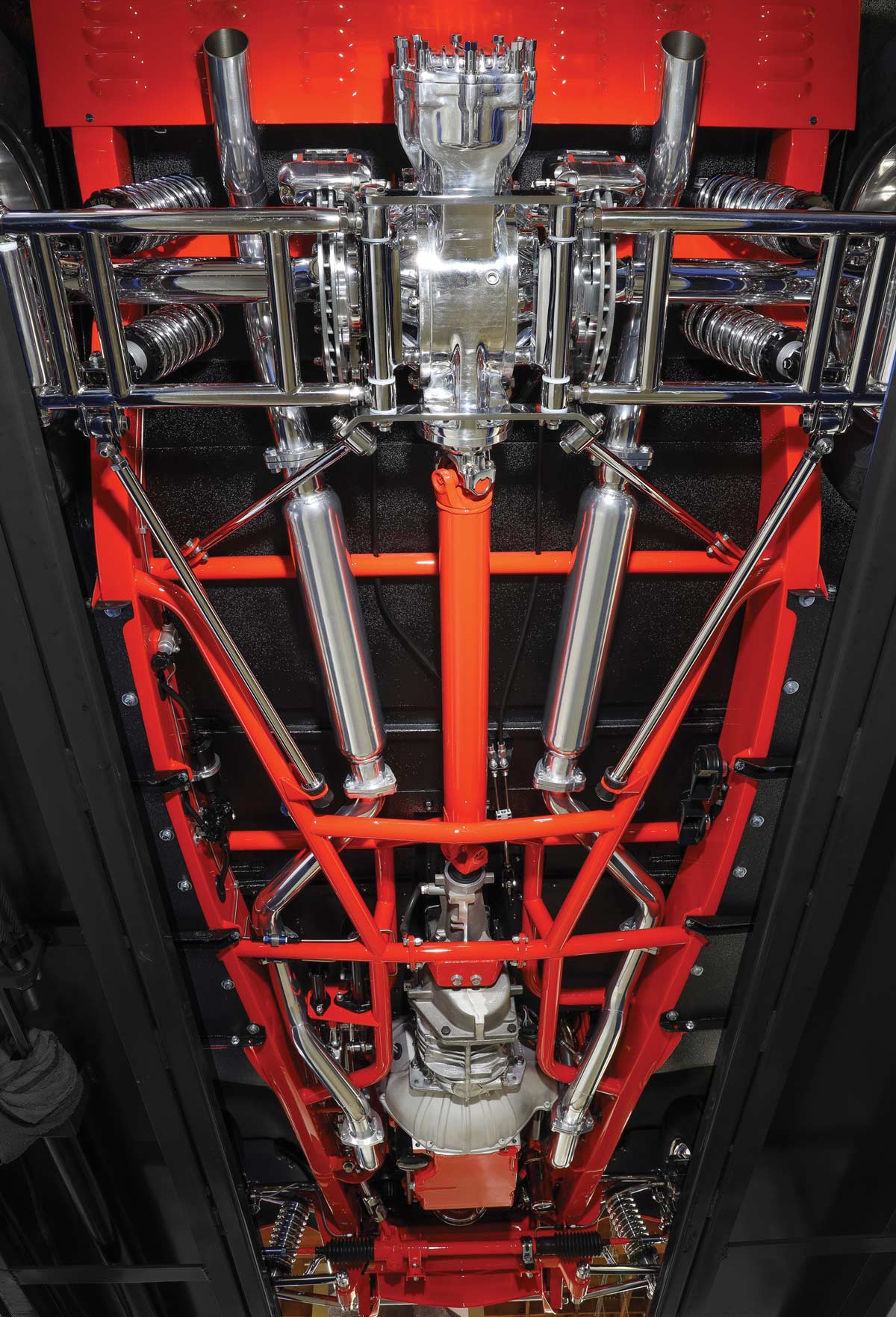
 Photography by Michael Christensen
Photography by Michael Christensenhen we hear of a father and son team building a hot rod, we can conjure up all sorts of builds. In this case we have Ross Myers (dad) and Aaron Myers (son) who each have their own ideas on what a hot rod should be. Ross has the ’36 Ford roadster that is built in a restomod look with a hint of its rodding heritage in the five-spoke Americans and Firestone rubber with plenty of sidewall showing. Aaron, on the other hand, shows off his ’32 Ford Tudor sedan with more of a hot rod appearance seen through the chopped top, plenty of louvers on the hood and rear pan, and the slotted mag-style wheel also from American. But the secret to both hot rods lies under the sheetmetal. There is plenty of modern-day hot rod hardware to be seen. And it is here that we see the “family” influence; but, as the old saying goes, “To each his own” comes into play.
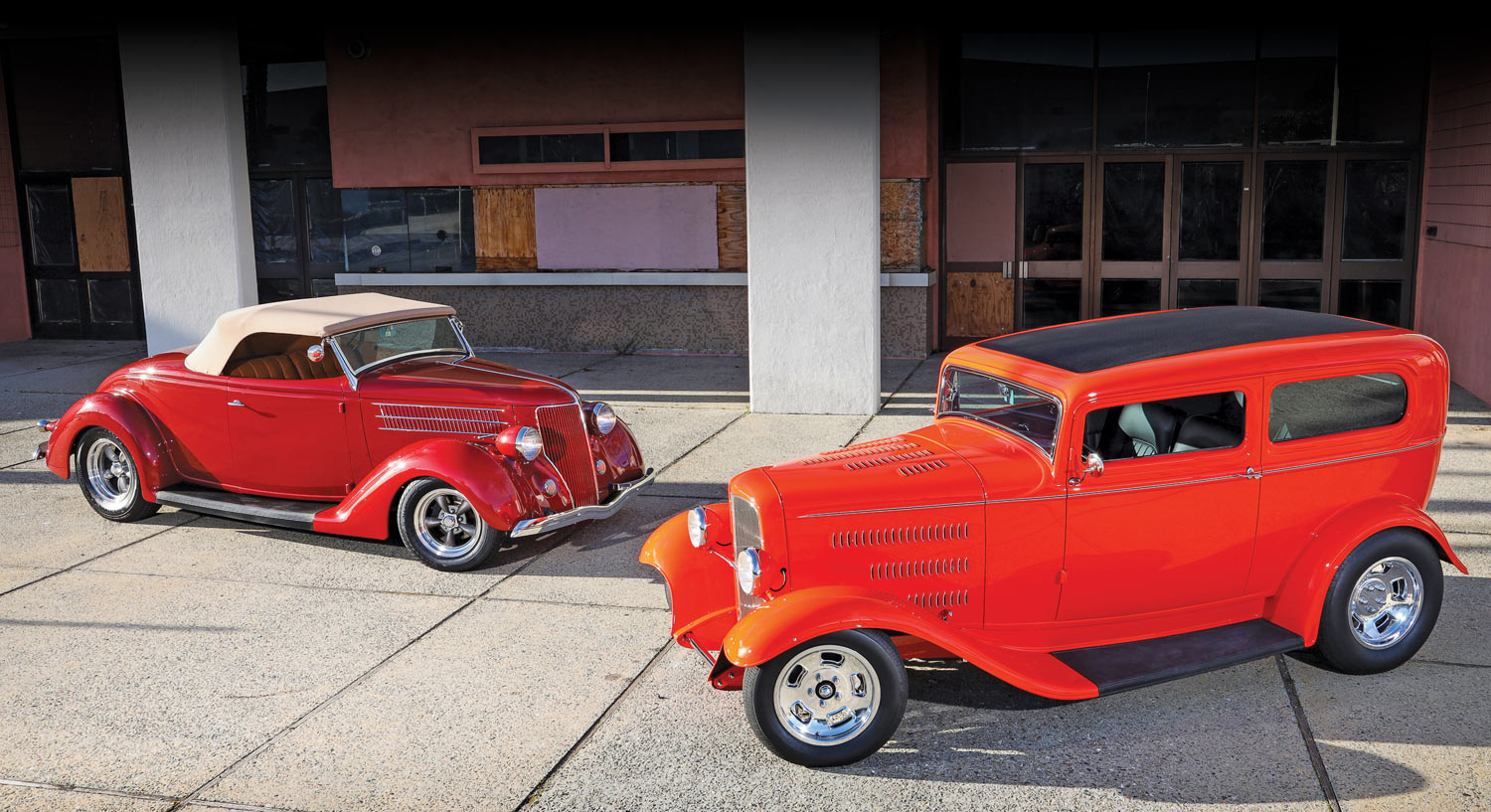
The rear suspension is based on a Kugel Komponents IRS that is centered around a John’s Industries 9-inch centersection with a limited-slip differential and 3.70 gears, Kugel axles, and a 57-inch hub-to-hub width. It also has a 4.5-bolt pattern with 1/2-20 studs. It too utilizes dual-per-side QA1 coilover shocks with Eibach 10-inch springs rated at 175 pounds and inboard Wilwood dual-piston disc brakes. The chassis rides around on a set of American Racing five-spoke mag wheels that measure 15×6 and 16×7 with Firestone 205/65R15 and 235/75R16 rubber.
Resting on this RBSR custom chassis is a factory steel ’36 Ford roadster that has a 3-inch chopped windshield and top/irons with a stock hood. The body- and paintwork was all handled by Darryl Hollenbeck of Vintage Color using an Envirobase waterborne PPG Honduras Maroon paint. This was followed up with pinstriping by Real Ralph.
Inside the original ’36 Ford roadster dash was used. From here it was modified by RBSR to accept the Classic Instruments gauges (with Brizio logo inscribed). Next up the dash was fitted with a Juliano’s steering column with a Juliano’s banjo-style wheel. All the prerequisite wiring was handled by Jim Vickery of RBSR. Other interior appointments include the Lokar shifter and brake pedal along with the “spoon” throttle. Seating comes by way of Glide Engineering and is covered in tan leather and stitched by Sid Chavers Co. Chavers also handled the carpeting and mats in a German square-weave material.
A good-looking hot rod isn’t any fun if there isn’t the prerequisite response to follow one’s “mashing” of the throttle. Resting under the stock hood is a 400-plus horsepower Roush Performance V-8 based on a Dart block (402 inches) and then filled with an assortment of performance items. The aluminum heads are topped with “Cobra Powered By Ford” valve covers that are polished and detailed with body-matching paint. Other “go-fast” goodies include the Edelbrock intake with a “Born-Again AFB” (as it is referred to from its Carter heritage) in the AVS 2 Series four-barrel carb. It’s fed its fuel through a Carter fuel pump and covered with a Mooneyes air cleaner. It too is polished and trimmed in matching body color. The V-8’s electrics fall to MSD in the form of the electronic distributor, coil, and plug wires. Other electrical accessories include the Optima battery and a polished Powermaster starter and alternator. More appointments include a polished Edelbrock water pump and a Vintage Air electric fan. The Ford V-8 backs up to a GM 700-R4 with the Lokar shifter and a B&M trans cooler.
Exiting the spent gases are a set of Sanderson 1-5/8-inch tube headers and from here Stratton of RBSR built the remainder of the stainless steel exhaust system that runs through a pair of stainless mufflers.
Well, that wraps up dad’s hot rod, now let’s move onto the son’s ride.

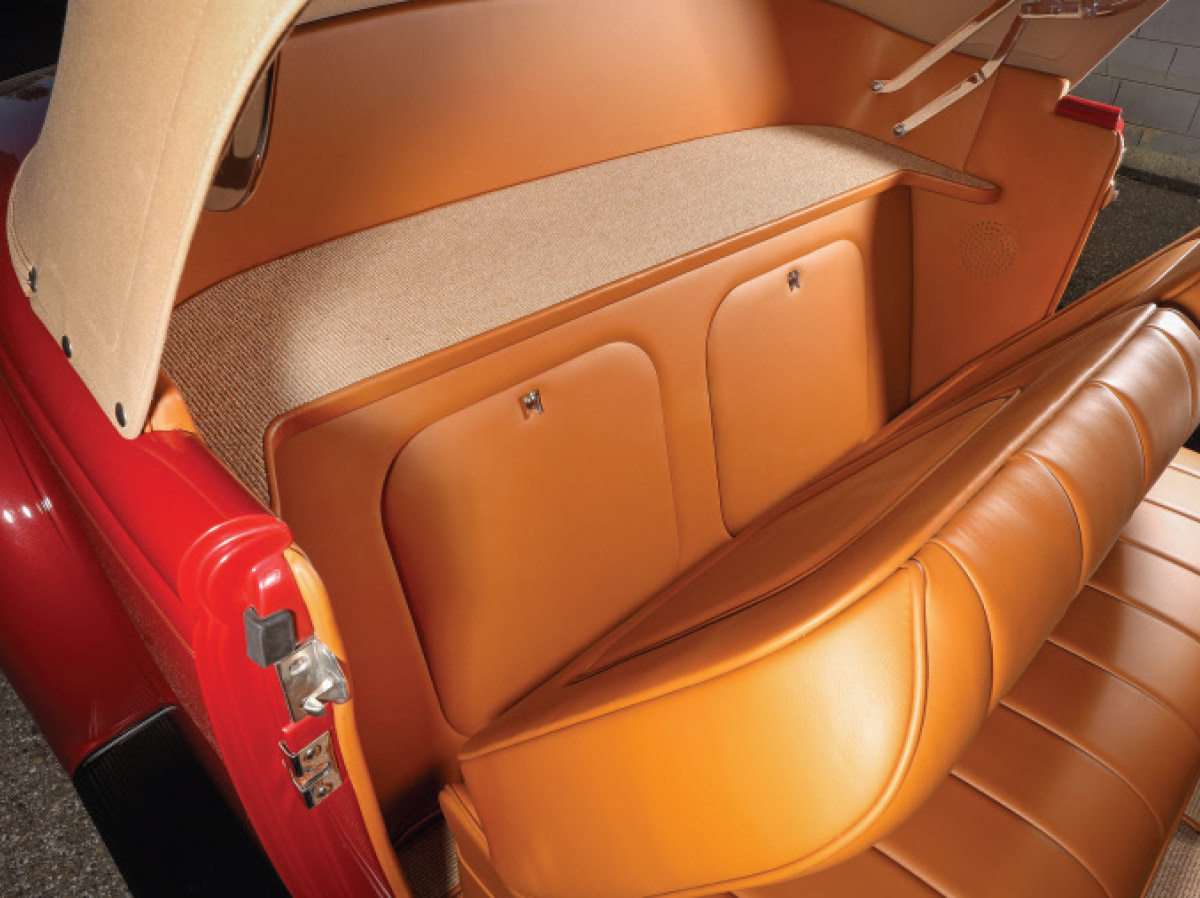
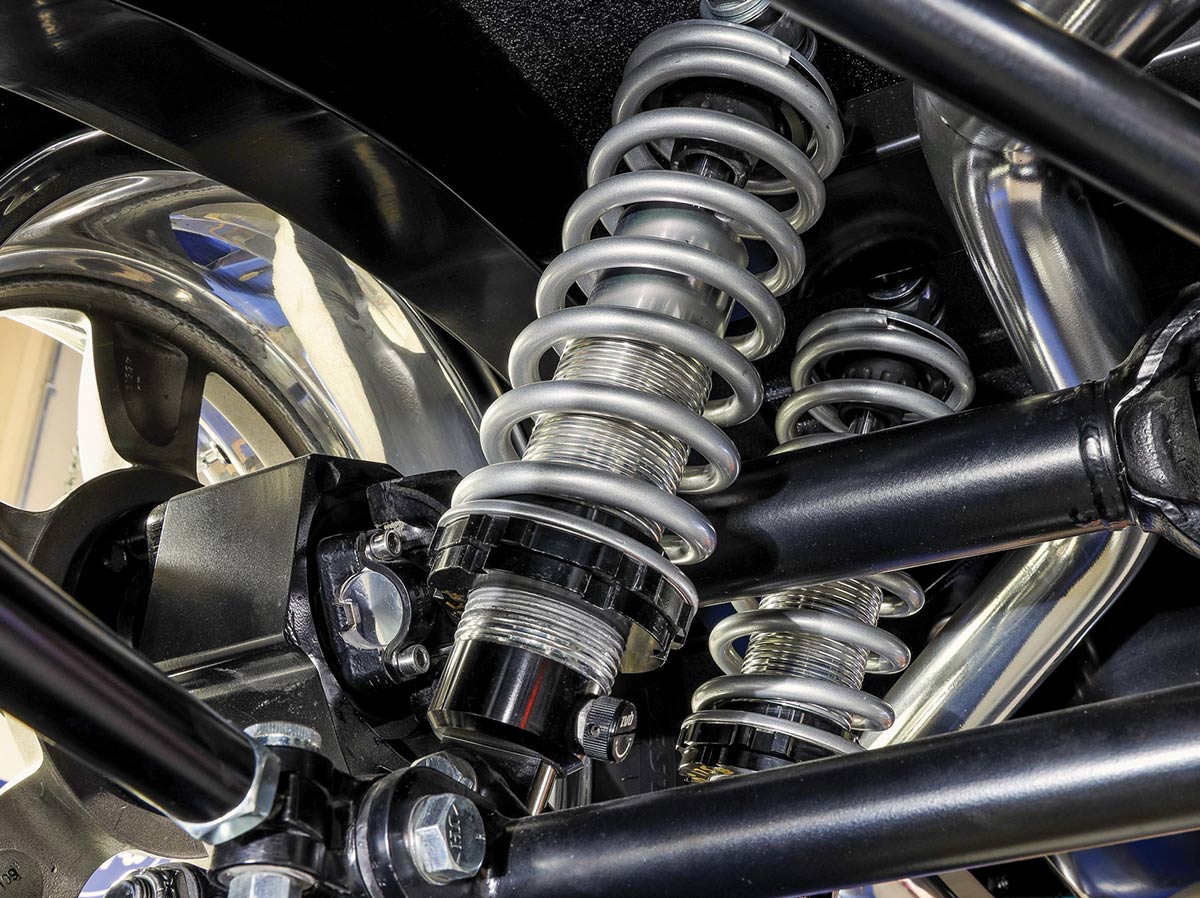

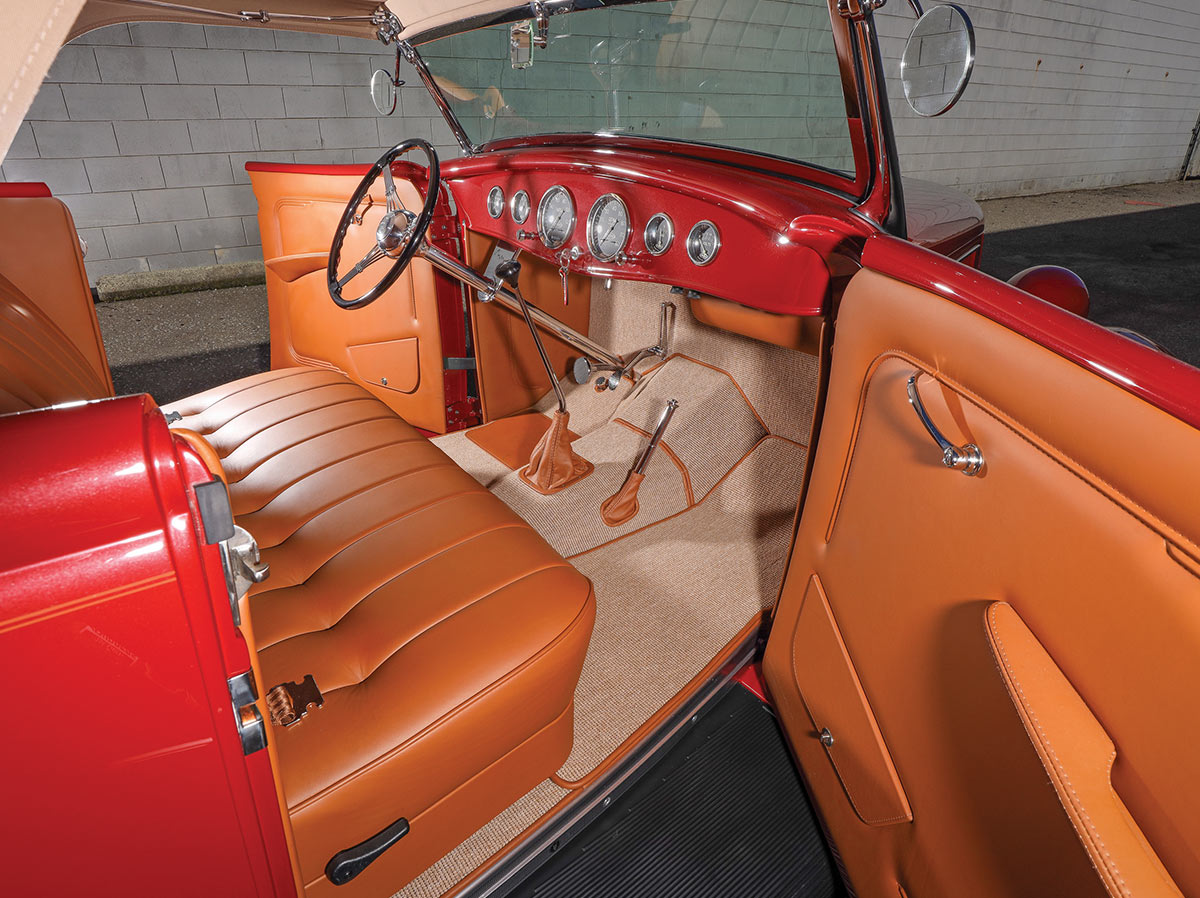
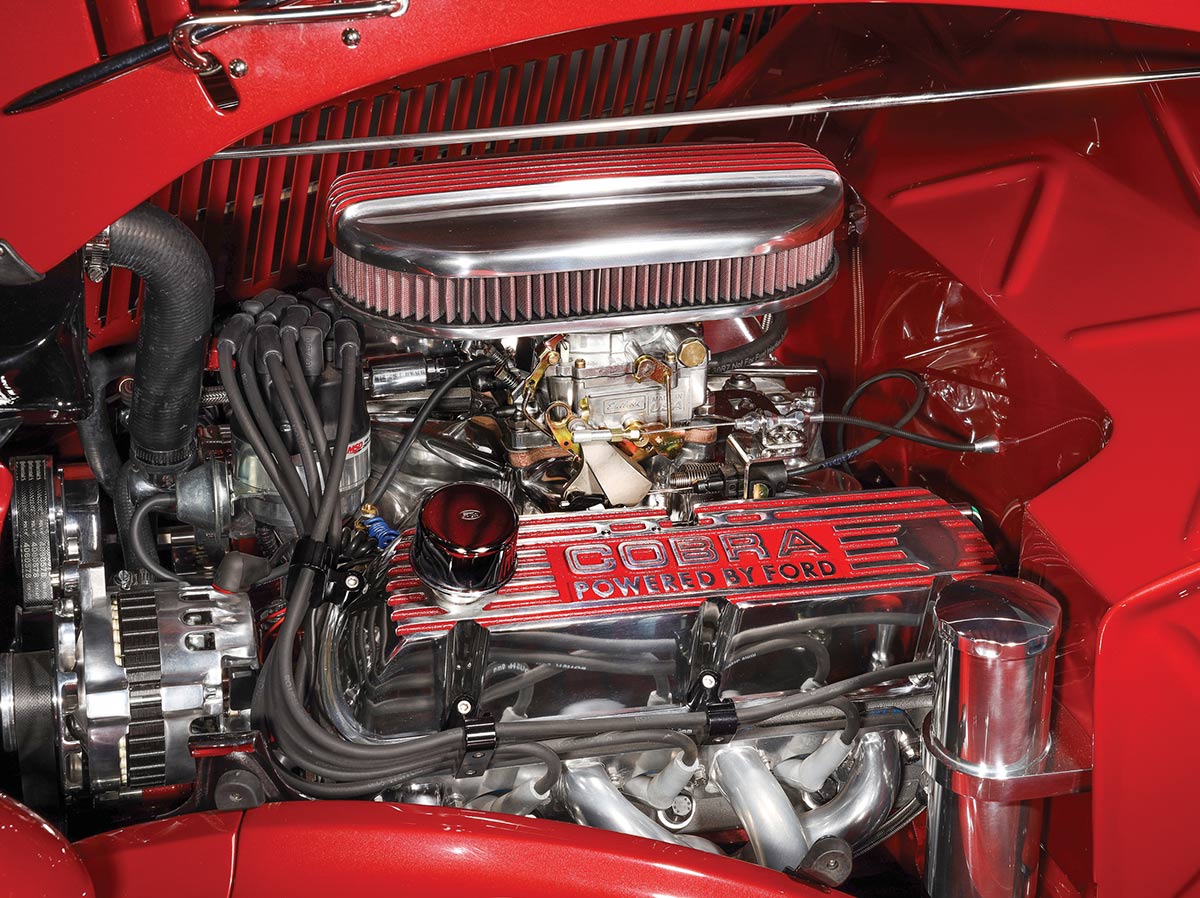
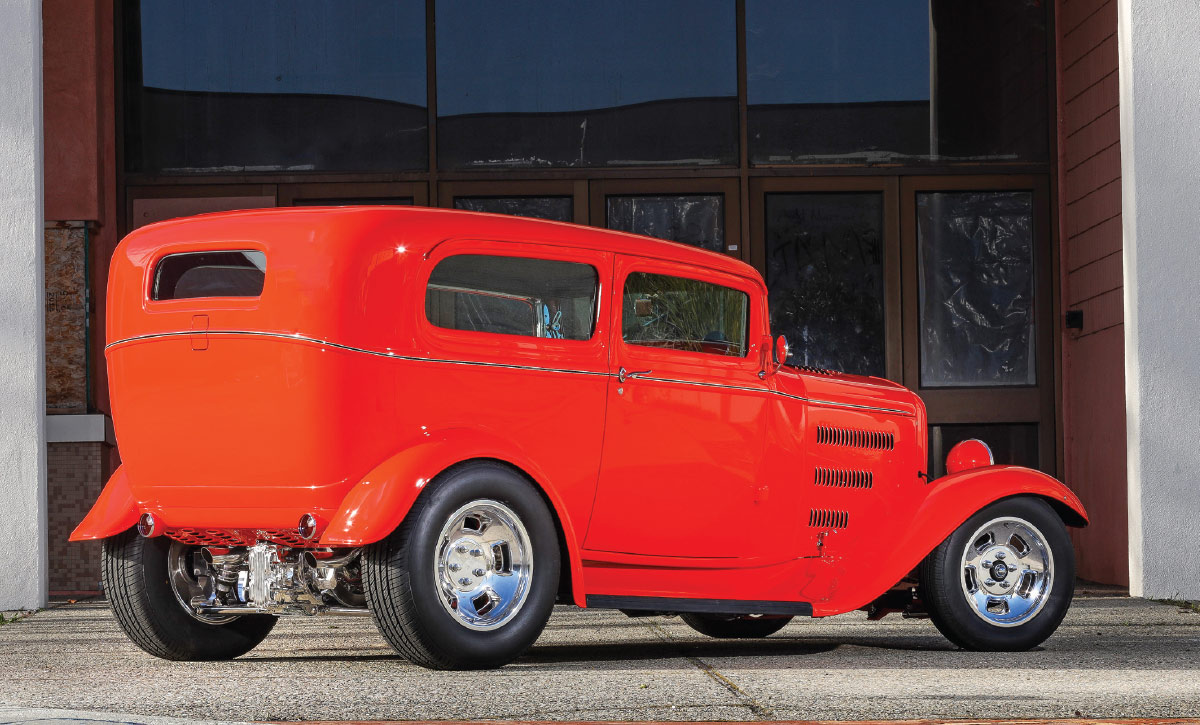
Once again, the Myers influence can be seen in their choice of chassis. Here, Aaron selected a pair of Total Cost Involved framerails, which was then shipped over to RBSR to make the necessary changes. It was Jack Stratton who massaged the ’rails and then fit the front and rear Kugel Komponents independent suspension.
The IFS is based on a Kugel system with Kugel front spindles and sway bar, rack-and-pinion steering, QA1 coilover shocks, and Wilwood disc brake system based on polished Dynalite two-pistons calipers. Should be noted that Aaron likes his brightwork as there is plenty of chrome and polished metal spread throughout this build.
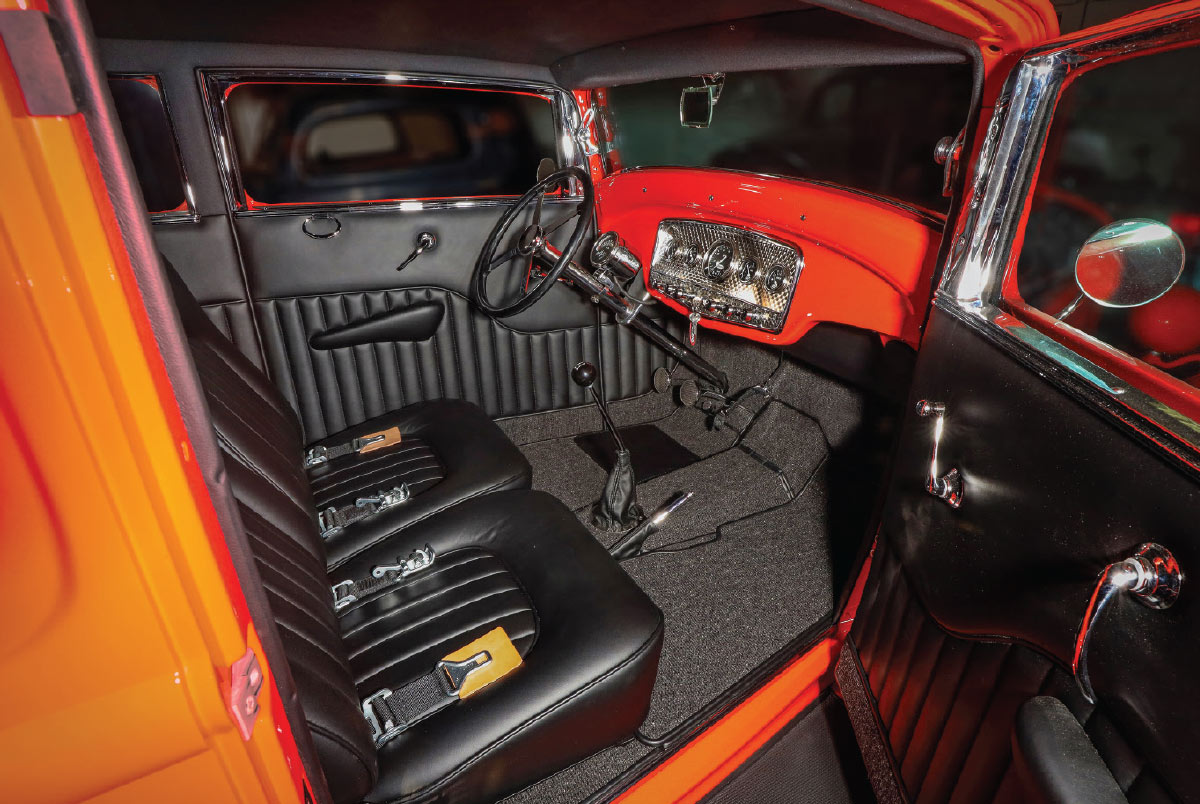
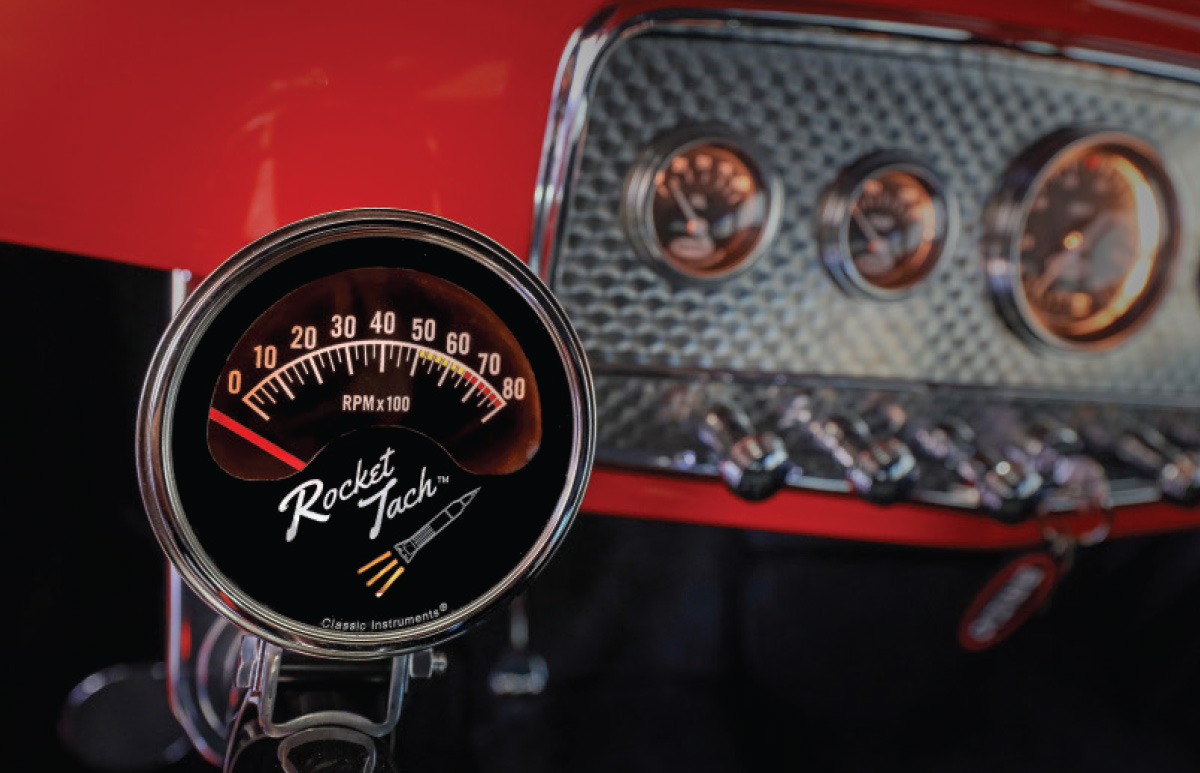
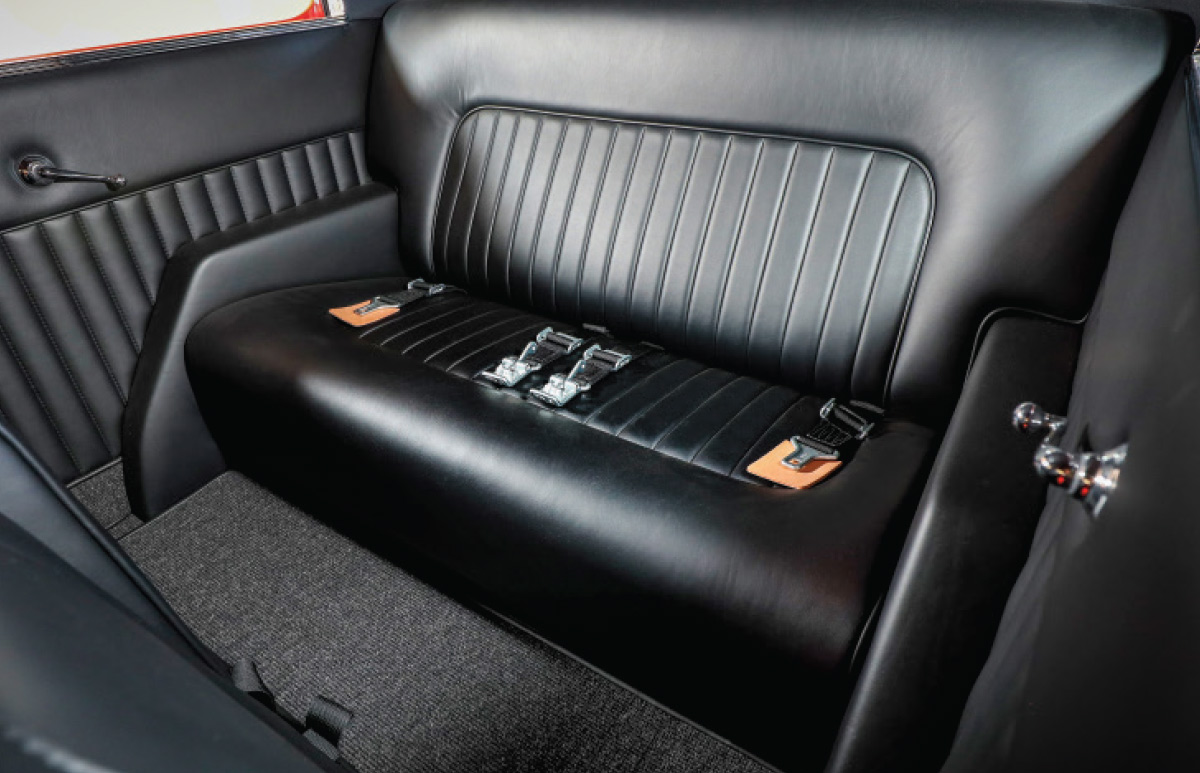


Rolling stock consists of polished American Rebel slotted wheels reminiscent of the old Halibrands and then outfitted with Diamond Back tires. The wheels measure 15×5 and 16×8 while the rubber is 165R15 in front and 255/70R16 in back.
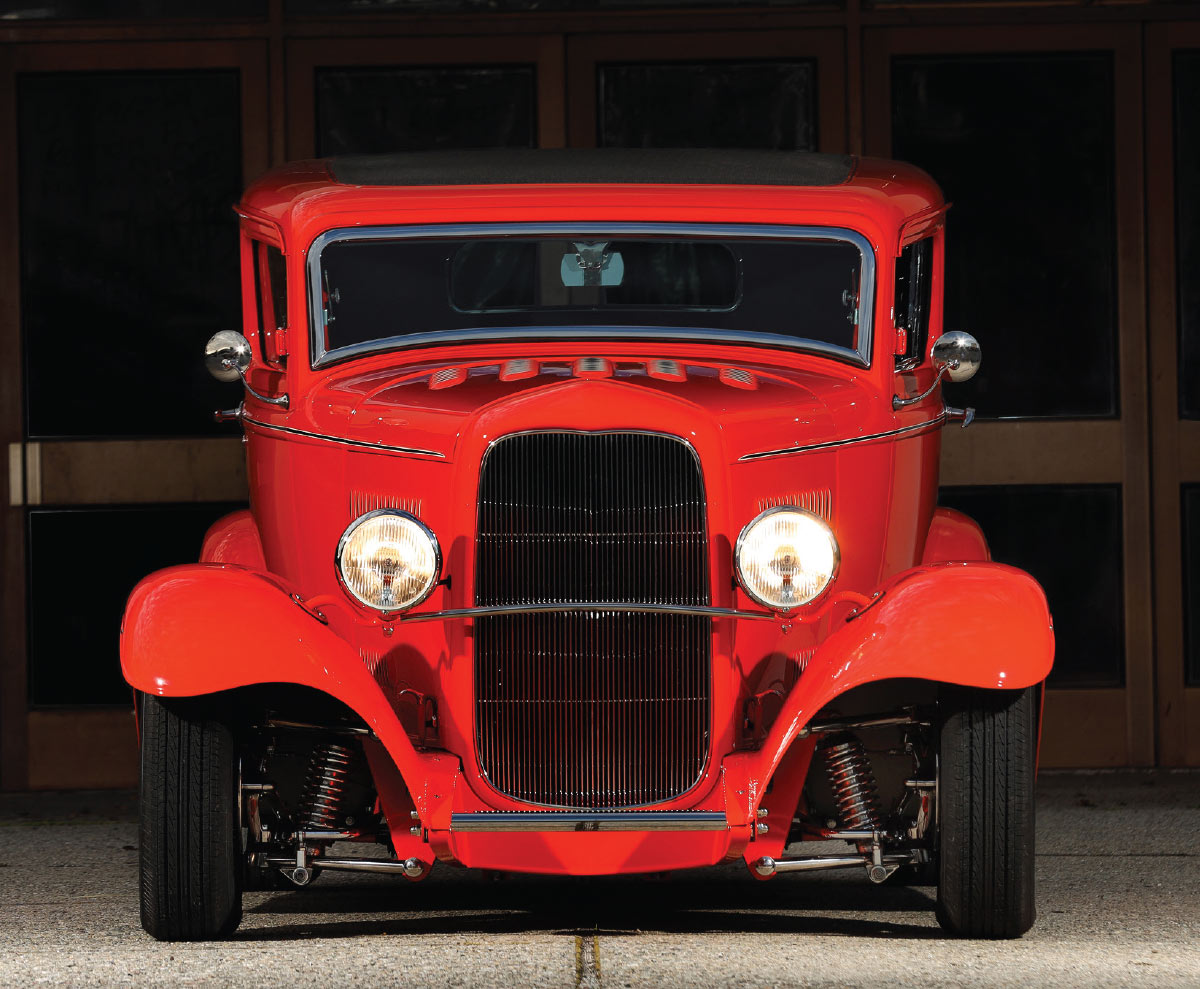
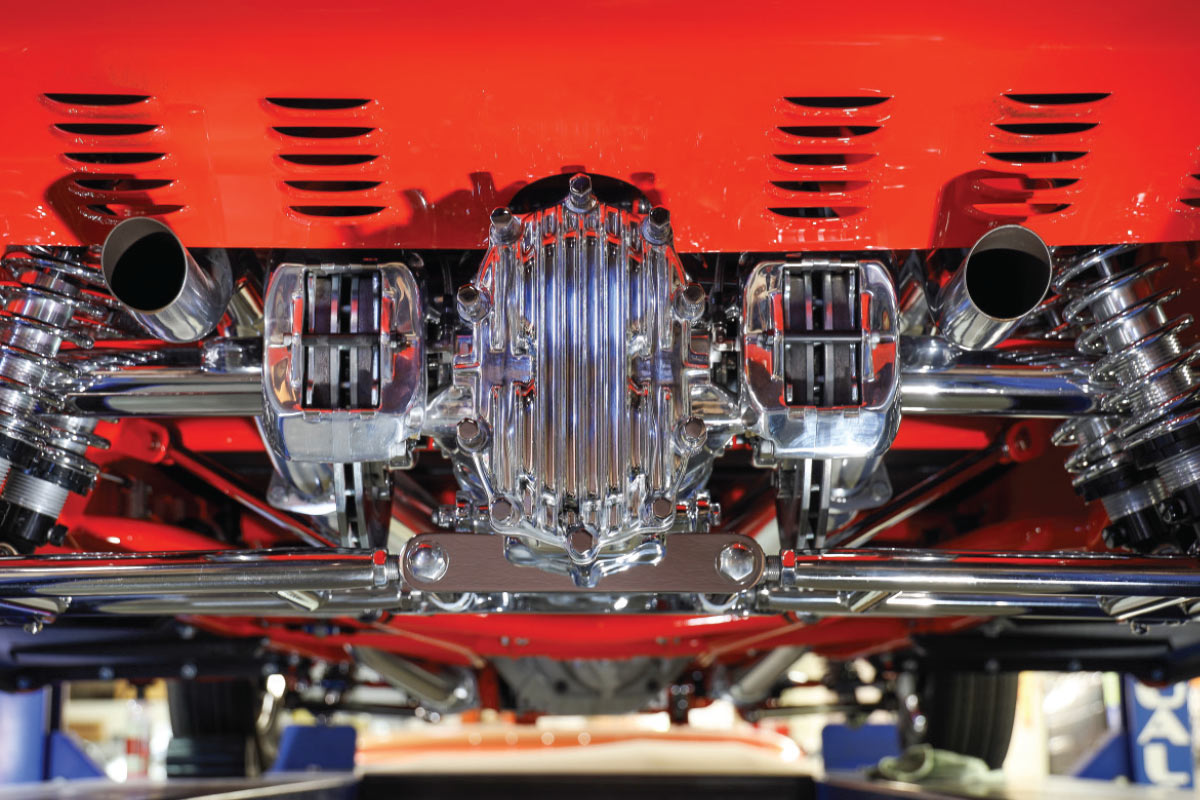
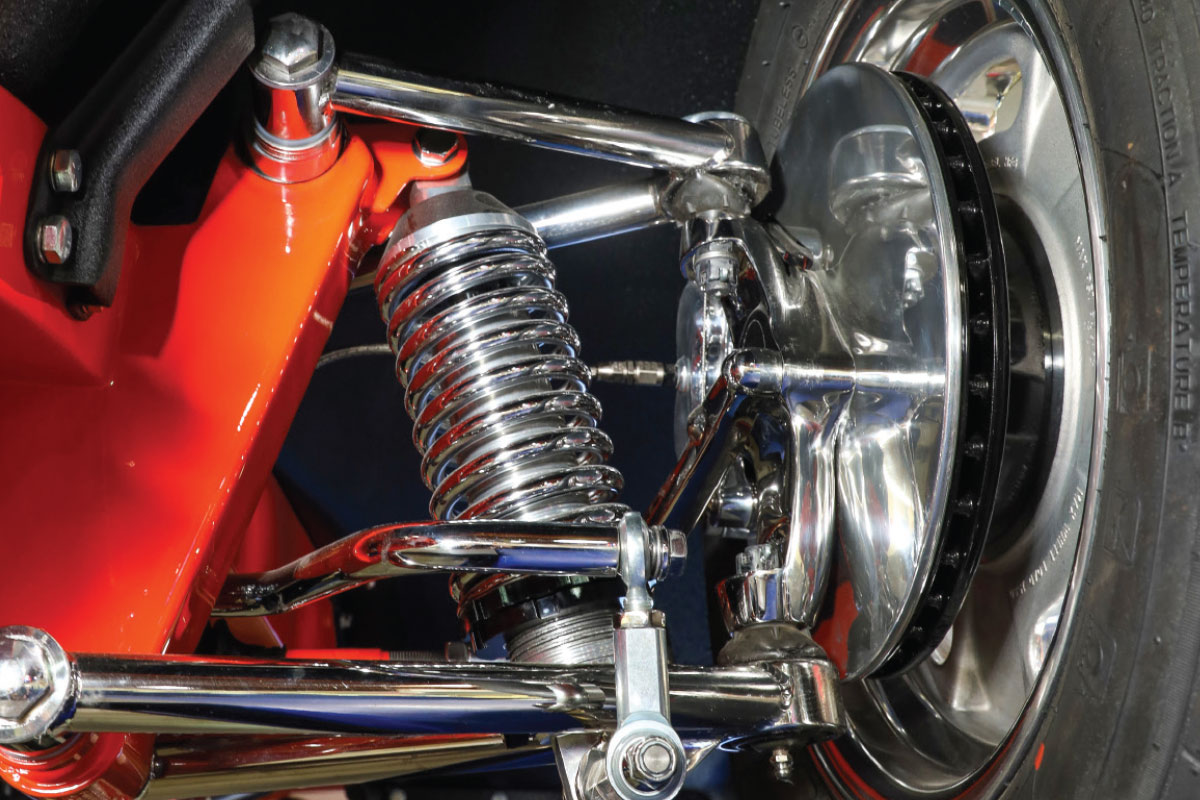
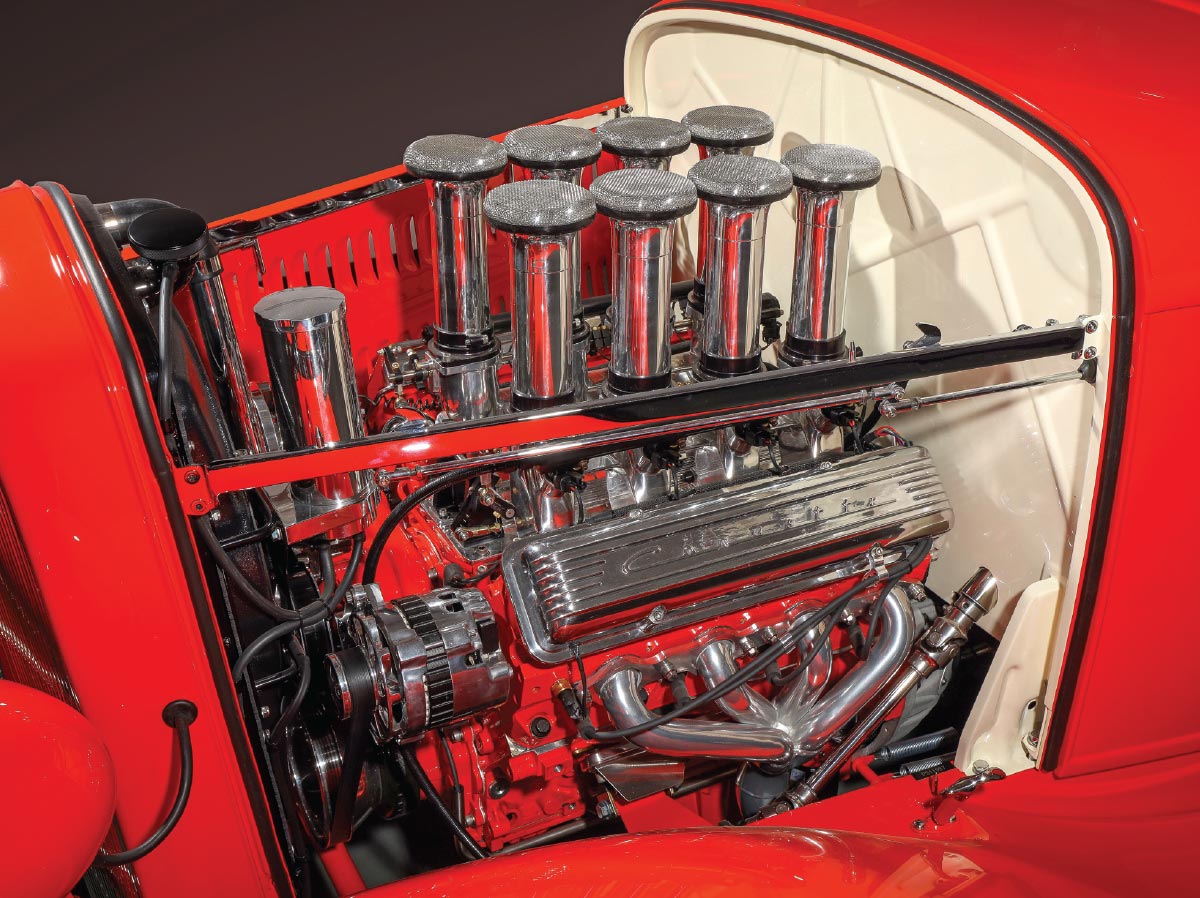

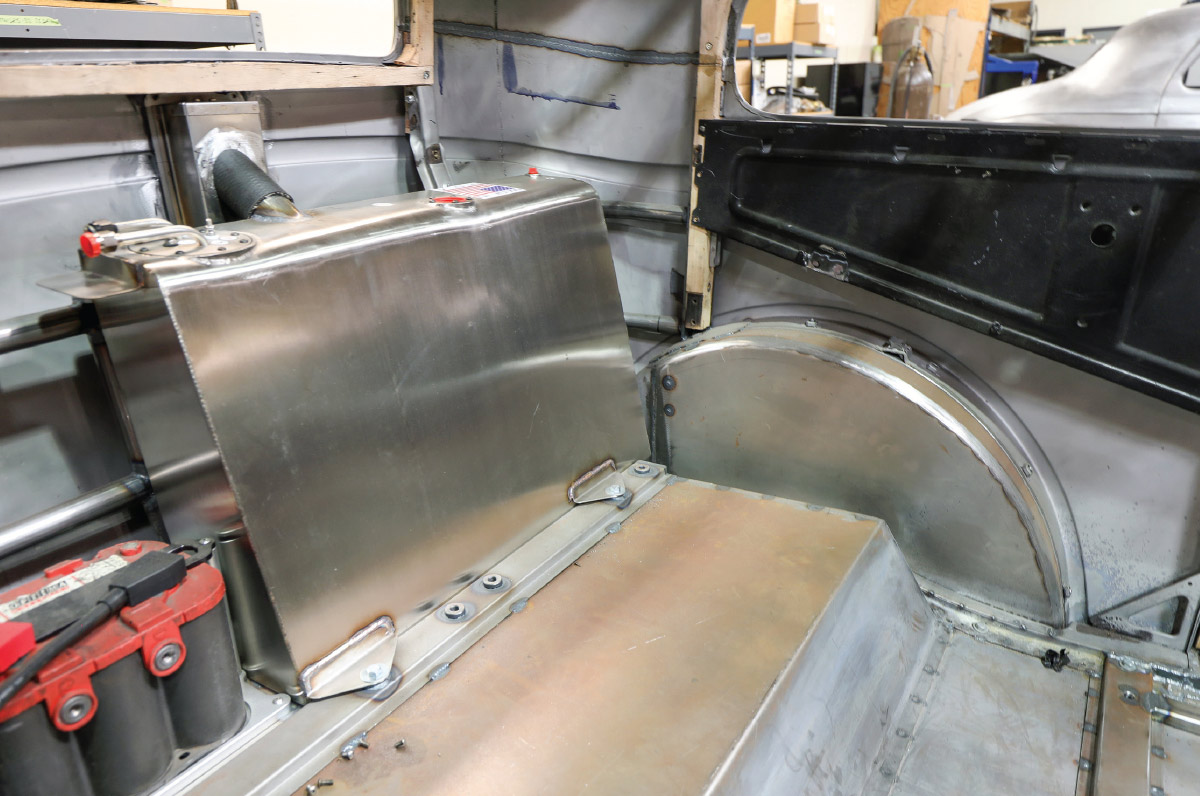

Inside the factory Deuce dash was modified to accept a SO-CAL Speed Shop Auburn-style panel with an engine-turned insert. From here the Classic Instruments Hot Rod-style gauges, with the Brizio logo, are present. The Classic Instruments Rocket Tach is affixed to the LimeWorks steering column. Controlling the steering chores is a Mooneyes four-spoke Sprint Car–style wheel. All the necessary wiring was handled at RBSR by Jim Vickery, which includes getting the Vintage Air system up to cooling capacity. The front buckets come by way of Glide Engineering while the rear bench seat is custom. All were upholstered in black leather by Sid Chavers Co. and then accompanied by German square-weave carpeting along with a charcoal mohair headliner.
Well, there you have it. Your basic father and son build—except each has his own car reflecting his own ideas and wants. Two jobs well done.
